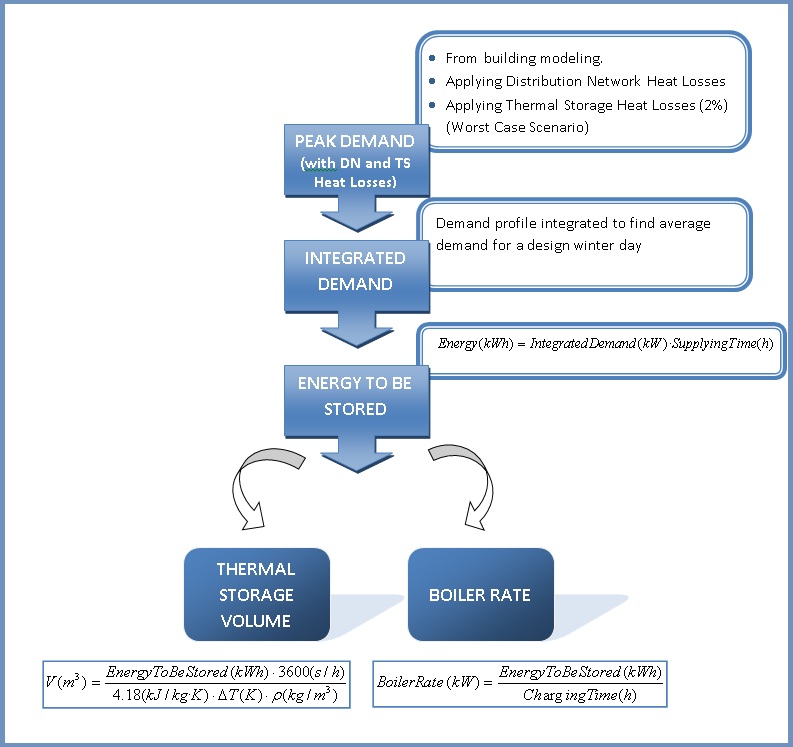
Before any computational modelling of the district heating network was performed (with various sizes of the thermal storage), hand calculations were used to size both the electrode boiler and the thermal store for both scenarios. This allowed us to gain an insight into the size of the equipement neccessary for both scenarios.
This section of the website details the method used to calculate the electrode boiler rating and the thermal store capacity for both scenarios and the corresponding results obtained
The general process for calculating the size of the thermal storage and electrode boilers for both scenarios is shown below

The first step of the sizing process is the calculation of the Peak demand for each scenario, by addition of the heating requirements calculated by modelling of the buildings and the Distribution Network heat losses (obtained from the piping calculations). To this value the thermal storage losses, which in the worst case scenario will be 2%, are added.
Then, the peak demand for each scenario is integrated to find the average demand for a design winter day.
Finally, the energy to be stored is obtained by multiplying this last value by the number of hours that the heat will be supplied. For this scheme, we have estimated a supplying period of 16 hours; and a night charging period of 8 hours, as it has been assumed to be the period with higher value of wind surplus (due to the fact that the wind turbines are usually switch off during the night).
Then, using the formulae included in the General Process Diagram, the volume of the thermal store and the rate of the boiler are obtained. As it can be seen in the table, there are two values for the thermal storage tank volume in each scenario, in order to consider the two water temperature differences inside it (20 and 30 degrees).
HAND CALCULATION RESULTS
The results of this process are shown in the table below:

However, the estimation of a supplying and a charging period does not represent the actual system as in reality the thermal storage will be charged from the entire wind surplus until it is full. However, the complexity of a dynamic simulation avoids undertaking a more accurate calculation.
Therefore, with the purpose of having a better approach of the system, some simulations have been run for different case scenarios using Merit, a modeling software for supply-demand match simulations.